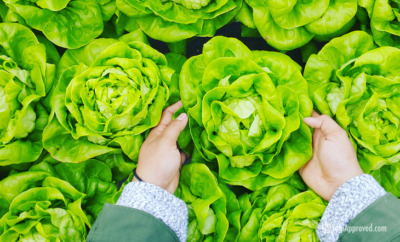Enjoy Food From Around the World With These 3 Global Cuisine Recipes

Food provides us with the nutrients we need to sustain life and health, and it also brings very special experiences to us. Global cuisine recipes offer ways for us to connect: with other people, with our culture, and with the greater environment around us.
There is a reason food shows are so universally popular, as they are centered around our shared human experience of creating and reveling in nourishment.
Global Cuisine Recipes Help Us Connect
In our modern world, we have a unique opportunity to constantly learn about all aspects of food and eating. Many of us live in areas where we are exposed to different types and styles of food, sometimes all within the stretch of a few blocks.
However, it is easy to overlook the myriad of thoughts and decisions about what makes the creation of dishes, and cuisines designed around them unique and beloved.
Food offers ways for us to connect: with other people, with our culture, and with the greater environment around us.
These include everything from the ingredients used, methods used for preparing and serving, and designating when, how often, with whom the meal is consumed, and the occasions selected for association with specific foods and cultural meaning bestowed upon certain foods.
As a Registered Dietitian, I am always eager to share and educate about nutrient-dense foods in a way that is as inclusive and culturally expansive as possible.
In creating nutrition materials, it is my goal to broaden our understanding of what “healthy” food is and to maintain an open mind about what we can learn from different cultures and dietary experiences.
How to Train Your Brain to CRAVE Healthy Food
My work is enriched by increased exposure to a variety of cuisines and cultural foodways, as well as the people who have shared their culinary and dietetic wisdom with me.
Enjoy Food From Around the World With These 3 Global Cuisine Recipes:
I had the pleasure of working with my fellow dietetics professionals to create this article featuring three nutrient-rich dishes from multiple countries to inspire knowledge of, and curiosity around, multicultural foods.
Each dish comes with a description of the nutritional benefits as well as a recipe. Warning: you may feel incredibly hungry after reading this post!
5 Healthy Dishes From Around The World to Ignite Your Senses
1. Rajas Con Queso Recipe

According to WIC dietitian and nutrition researcher Dr. Ana Moyeda Carabaza, rajas con queso (poblano pepper strips with cheese) is a typical Mexican dish that can be served as a taco filling or a sauce to serve on top of tamales during the winter season.
The foundational elements – Poblano peppers, cheese, and Mexican cream – provide a combination of vitamins (such as vitamin C, A, and B6), fiber, calcium, and protein.
Dr. Moyeda also notes the dish represents the evolution of the Mexican diet after Spanish colonization, when goats and cows were introduced to the country and dairy became a regular ingredient.
Ingredients:
- 2 tablespoons of olive oil
- 3 poblano peppers
- 1 tablespoon of minced garlic
- 1 onion sliced into rings and then cut in half (to make half-moon strips)
- 1 cup of corn kernels
- ½ cup of Panela cheese or Oaxaca cheese for a creamy texture, cubed
- ¼ cup of Mexican cream (crema Mexicana in Spanish)
Preparation:
- Roast poblano peppers. Allow them to sweat for 15 minutes (you can put them inside a small plastic bag), then peel off the skins, remove seeds, and cut into strips
- In a medium size skillet at medium-low temperature, place the olive oil. When the oil is hot, add the onion, garlic and poblano pepper and sauté for 3-4 minutes
- Add the corn kernels and cook for 2 minutes
- Add the panela cheese and season with salt and pepper
- Cover and cook for 5 minutes
- Add the Mexican cream (crema Mexicana) and mix it with the vegetables
2. Nigerian Tomato Stew Recipe

Clinical dietitian Ofunneka Omekam grew up eating this popular West African recipe after her parents migrated from Nigeria to America in the late 1970s.
The stew recipe is full of flavor and nutrients blending ingredients including tomatoes, onions, bell peppers and habanero peppers. Frequently served over rice, pairing the dish with meats (like catfish, goat, hen and/or beef), black eyed beans and fried plantains makes it a protein and fiber packed meal.
Omekam still enjoys tomato stew to this day, as “the smell of the herbs and spices alone reminds me of a culture I am truly proud to be a part of.”
Ingredients:
For the stew:
- 1/4 – 1/2 cup vegetable oil
- 3 pounds chicken cut in pieces
- 4 roma tomatoes, chopped
- One 28 oz can whole peeled plum tomatoes, discard the liquid
- 2 Tbsp tomato paste
- 1 red bell pepper, chopped
- 2 habanero peppers
- 1 medium onion sliced
- 1 1/2 tsp dried thyme
- 1 Tbsp Nigerian red pepper (or Cameroonian red pepper)
- 1 tsp Accent
- 1 bay leaf
- 1 chicken bouillon cube
- Salt and pepper to taste
- 1 cup chicken stock
- Water as needed
For the chicken:
- Salt and pepper to taste
- 1 tablespoon thyme
- 1 teaspoon garlic powder
- 1 chicken bouillon cube
Preparation:
- Wash and cut chicken into bite-sized cubes or pieces
- Place in a pot and add water, thyme, chicken bouillon cube, salt and black pepper to taste. Cook the chicken until done and then fry until golden brown. Place the chicken on a rack and cook in the oven at 350 degrees for 10 minutes. Set aside
- Blend the tomatoes, habanero peppers, bell peppers in a blender until pureed
- In a large pot heat up the vegetable oil and add the sliced onions frying just until they turn golden brown
- Add the tomato mixture and fry for about 25 minutes until the mixture reduces in size, turns a deep red, and the oil begins to separate from the tomatoes. Stir continuously to prevent burning at the bottom
- Add the tomato paste and fry for an additional 5 minutes
- Add the chicken stock and seasonings (dried thyme, red pepper, accent, bouillon cube, and bay leaf)
- Stir together and add more water if needed. Continue to simmer for 15 minutes
- Serve with rice, beans or anything of your choice
3. Lahmacun Recipe

Nutrition Ph.D. candidate and research assistant Aysegul Baltaci has lots of praise for one of Turkey’s popular traditional foods, lahmacun (known as Turkish Pizza in the US).
Even though this global cuisine recipe has existed for thousands of years, its origin is still a mystery with possible Middle Eastern, Turkish or Armenian roots.
Lahmacun is made with thin dough topped with a mixture of ground meat, fresh herbs and spices. In Turkey, it is usually served as a roll, along with fresh vegetables like tomatoes, onions, parsley, lettuce and/or lemon juice, and paired up with a yogurt drink.
Your Guide to Seasonal Produce + 5 Benefits of Buying Vegetables and Fruits In Season
A nutrient-dense dish due to its high protein and vegetable components, Baltaci asserts that lahmacun will be your new favorite global cuisine recipe as it is very easy and quick to make and extremely delicious!
Ingredients:
For the ground beef mix:
- 1 lb ground beef
- 2 big onions chopped
- 2 tbsp. tomato paste
- 1/2 bunch of chopped parsley
- 2 diced tomatoes
- 2 Tbsp. olive oil
- 1/2 tsp. red pepper
- 1 tsp. black pepper
- 1 tsp. salt
- 8-10 uncooked 10″ Tortillas
For the salad plate:
- 1 romaine head
- ½ bunch of parsley
- 1 big tomato
- 1 lemon
Preparation:
Total time 30 min.
- Turn on the oven to 400° F
- Mix all the ingredients under the ground beef mix section. Apply this mix to the tortillas and place the tortillas on a pan. Then put them in the oven for 15 minutes
- Chop the romaine head, parsley, and tomato for the salad plate. Garnish with lemon and tomato roses
- Serve warm with the salad
The Immense Importance of Food Sovereignty and Preservation of Indigenous Foodways
While a number of us have been able to preserve and connect to our respective cultures through food, it is important to recognize that the impact of colonization resulted in a loss of traditional foodways for our Indigenous Peoples of the Americas and African Americans.
Many nutritious crops and cultural foods were destroyed or denied to these populations, imposing trauma with lasting repercussions among many generations. As a San Diego, California area resident, I acknowledge both the suffering and the dignity of the Kumeyaay people whose land we occupy.
However, there is rising awareness around providing these communities with the knowledge and the means to restore their traditional foodways, and in doing so address chronic health disparities and food insecurity.
According to Michael Pimbert of the International Institute for Environment and Development, the food sovereignty movement “aims to guarantee and protect people’s space, ability, and right to define their own models of food production, distribution, and consumption.”
This multifaceted effort involves advocacy, education, outreach and support for Native American and Black-owned businesses.
Here Are 3 Resources to Support Food Sovereignty and Nutrition Security:
1. Oldways NPO
This non-profit organization provides educational programs, resources, and recipes centered on shared cultural foods throughout the world.
The mission of Oldways is to improve public health by connecting people to heritage-based diets and food traditions “high in taste, nourishment, sustainability, and joy”. These include African, Asian, Latin American, and Mediterranean recipes and cultural eating traditions.
The African Heritage Food Pyramid is accompanied by “Plates of Expression” which focus on the culinary and cultural expressions of the four distinct regions of African heritage including Western & Central Africa, South America, The Caribbean, and The American South.
2. Intertribal Agriculture Council’s American Indian Foods Program
This program provides services to Native American and Alaska Native agribusiness owners and entrepreneurs with growing their food markets and expanding their exports.
Members of American Indian Foods are given a platform to showcase their products and culture through international trade shows as well as support for marketing education and collaboration with Native conferences.
Products are given the official “made/produced by American Indians” trademark, and the website allows customers to search for American Indian businesses selling traditional foods in their state.
3. Owamni by The Sioux Chef
Chef Sean Sherman, Oglala Lakota, is the founder and CEO of The Sioux Chef.
His business provides catering and food education centered on indigenous foods in the Minneapolis/St. Paul area, with a focus on the restoration and awareness of indigenous food systems in a modern culinary context.
After helping to develop the Tatanka Truck food truck which served pre-colonized foods of the Dakota and Minnesota territories, Chef Sherman opened Owamni, the first brick and mortar restaurant serving traditional Native American cuisine on sacred land in Minneapolis.
It was my personal privilege to hear Chef Sean speak at the 2021 Society for Nutrition Education and Behavior’s Annual Conference and heed his call to action to support American Indian owned and operated businesses and cultural foodways.
Global Cuisine Recipes Inspire Food as Cultural Celebration
I invite you to expand your food and eating perspective and approach different types of culinary traditions with curiosity and eagerness to learn.
Global cuisine recipes bring us together. At its best, food is an opportunity to share an experience of joy and celebration, and one special meal often leads to warm memories that can last a lifetime.
All included information is not intended to treat or diagnose. The views expressed are those of the author and should be attributed solely to the author. For medical questions, please consult your healthcare provider.
Special thanks to contributors Ana Florencia Moyeda Carabaza, PhD, Ofunneka Omekam, MA, and Aysegul Baltaci, MS.


This Month's Letter
From the Editor
Monthly motivation and food for
thought from our founder.





























